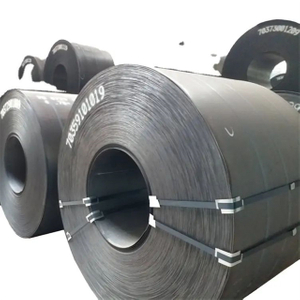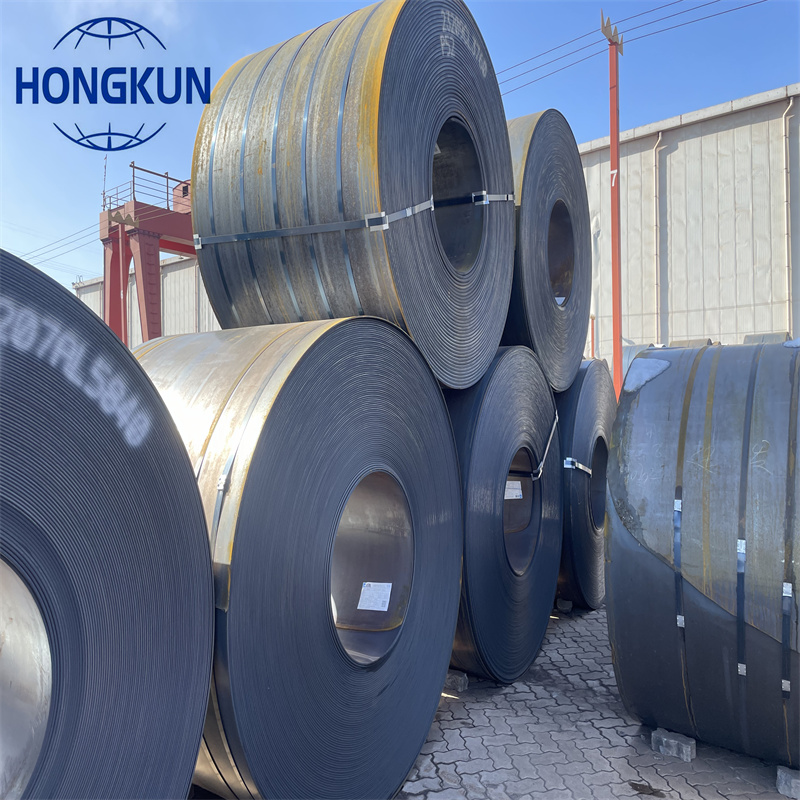Views: 0 Author: Site Editor Publish Time: 2025-05-15 Origin: Site









Have you ever wondered about the material behind some of the strongest, most durable products in the industrial world? Carbon steel plates are essential components in countless applications, providing strength, versatility, and cost-efficiency. From construction to automotive and machinery, carbon steel plates are highly valued for their ability to withstand stress, corrosion, and extreme conditions.
In this post, you’ll learn about the key characteristics of carbon steel plates, their various types, and why they are critical in industries worldwide. We will also explore the manufacturing process, common applications, and help you understand how China Hongkun Supply Chain Co., Ltd. can be your trusted partner for sourcing these high-quality plates.
Carbon steel is a type of steel where the primary alloying element is carbon. It is formed by mixing iron with carbon and other elements in varying proportions to achieve specific properties. Carbon steel’s hardness, strength, and wear resistance make it suitable for a variety of demanding applications.
The carbon content in carbon steel typically ranges from 0.05% to 2.1% by weight. This range affects the steel’s hardness and strength, with higher carbon content leading to increased strength but reduced ductility.
● High Strength and Durability: Carbon steel plates are known for their excellent tensile strength, which makes them suitable for heavy-duty applications where stress resistance is required.
● Versatility: They can be used in various industries like construction, automotive, manufacturing, and more due to their adaptable properties.
● Cost-Effective: Compared to other metals like stainless steel, carbon steel is relatively cheaper, making it a popular choice in mass production.
● Corrosion Resistance: Although not as resistant as stainless steel, carbon steel’s ability to resist wear and tear is commendable when treated with coatings or alloys.

Carbon steel plates come in different grades, each designed for a specific set of applications. The primary types include:
● Carbon Content: 0.05% – 0.3%
● Applications: These plates are widely used in general construction, fabrication, and automotive applications. They offer good formability and welding properties but have low strength compared to higher-carbon steels.
● Carbon Content: 0.3% – 0.6%
● Applications: Ideal for manufacturing gears, shafts, and structural components. These plates offer a good balance between strength and ductility.
● Carbon Content: 0.6% – 1.5%
● Applications: These plates are highly durable and used in applications requiring exceptional hardness and wear resistance, such as tools, blades, and springs.
● Carbon Content: 1.5% – 2.1%
● Applications: These plates are used in high-performance applications where extreme hardness is necessary. They are generally used in cutting tools and high-strength products.
The production of carbon steel plates involves several key stages that contribute to their strength and durability:
The process begins with molten steel being poured into molds to form billets or slabs. The steel is cast using either continuous casting or ingot casting, depending on the required size and shape.
After the steel has cooled, it is subjected to hot rolling. This process involves passing the steel through rollers at high temperatures to reduce its thickness and create uniform plates. The plates undergo further heat treatment to refine their properties.
For certain applications requiring high precision, the steel is cold-rolled at room temperature. This improves the surface finish and provides tighter tolerances, enhancing the material's strength.
To achieve specific mechanical properties, carbon steel plates undergo various heat treatments, including annealing, quenching, and tempering. These processes improve the hardness, toughness, and ductility of the plates.
Finally, the plates are subjected to finishing processes like cutting, grinding, or coating to meet specific customer requirements.

Carbon steel plates are used in a wide range of industries and applications, including:
● Construction: Carbon steel plates are used in the construction of bridges, buildings, and other structural components.
● Automotive: These plates are essential in manufacturing vehicle frames, chassis, and other automotive parts.
● Machinery: Carbon steel is used in heavy machinery parts, including shafts, gears, and tools.
● Shipbuilding: Due to their durability, carbon steel plates are used in ship hulls and other marine structures.
● Energy: These plates are integral in manufacturing pipelines, storage tanks, and other energy-related infrastructure.
Carbon steel plates offer unmatched strength and versatility for various industrial applications. With the right supplier, such as China Hongkun Supply Chain Co., Ltd., you can access high-quality carbon steel plates tailored to your exact needs. Whether you're building a bridge or manufacturing machinery, carbon steel plates will provide the durability and performance required to get the job done right.
Using carbon steel plates offers numerous benefits:
● Strength and Durability: Carbon steel plates are highly resistant to physical wear and tear, making them ideal for heavy-duty applications.
● Cost-Effective: Compared to other steel alloys, carbon steel is relatively cheaper, making it an affordable choice for large-scale projects.
● Versatile Applications: Carbon steel plates can be customized for a wide range of industries, offering flexibility in design and use.
● Easy to Work With: Carbon steel is easy to machine, weld, and cut, providing manufacturers with a material that can be adapted to a wide range of specifications.
A: Low carbon steel plates have lower tensile strength and are more ductile, making them easier to weld and form. High carbon steel plates, on the other hand, are stronger and harder but are less ductile and may be more difficult to work with.
A: Carbon steel plates are relatively easy to weld, particularly low-carbon steel plates. However, the welding process may vary depending on the carbon content, with higher carbon steels requiring special attention to avoid cracking.
A: Carbon steel plates are widely used in industries like construction, automotive, aerospace, machinery manufacturing, and energy, where strength and durability are essential.